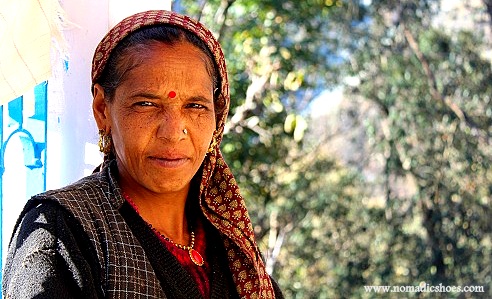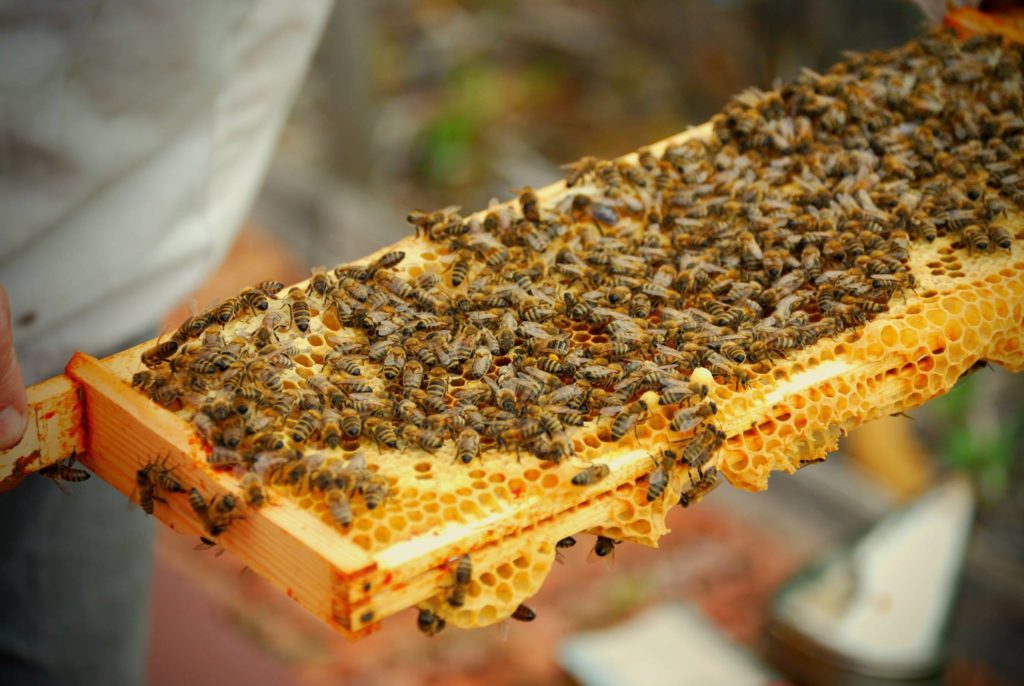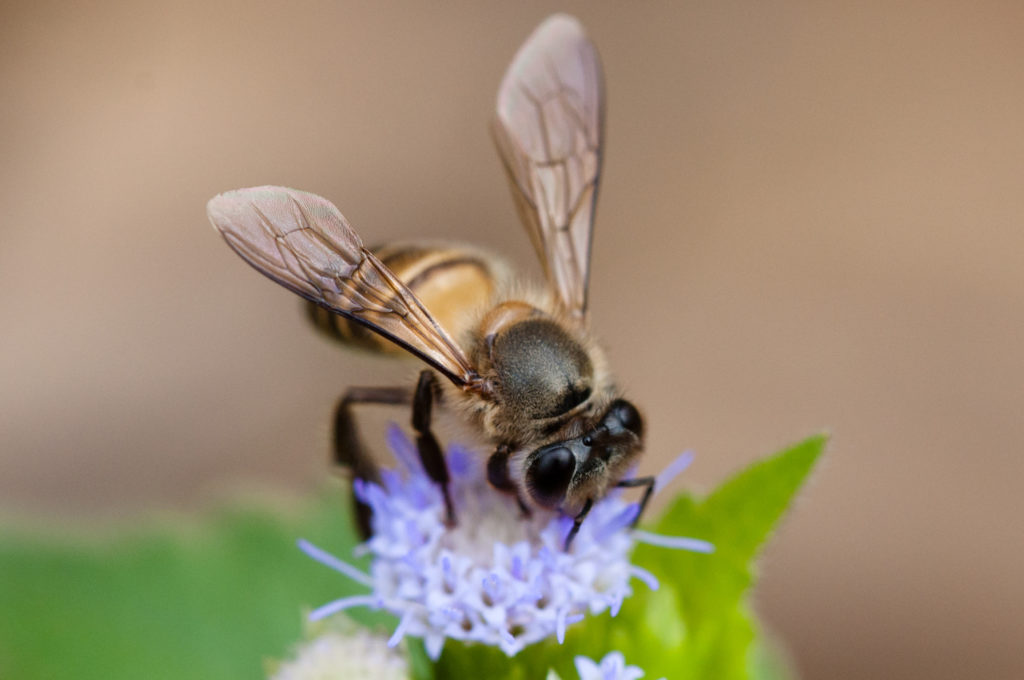
Alchuna is a tiny hamlet along the banks of Kalsa river in the Kumaon region of Uttarakhand. Tucked away in the folds of Himalayas, Alchuna is about 35 Kms away from Haldwani in Uttarakhand.
I went there with a group of 18 soul-inspiring women from all walks of life to celebrate Women`s Day. The trip was meticulously organized by Chandni Aggarwal from Transforming Travels, a travel based company that specializes in trips to the Indian hinterland. Each participant on the trip pushed their limits to come out of the stereotyped roles assigned by our society. It was indeed a pleasure to travel with so many awe-inspiring women.
In Alchuna, we spend the weekend living and learning the rustic life of a village. From eating organic food, skinny dipping in the river, walking long stretches, learning the antics of farming and bee-keeping. I was really intrigued by the bee-keeping process; I had learned about bees in school but sadly those boring science lectures never interested the learner in me.

Here is a concise account of what I learned about Apiculture, in a sleepy Kumaoni village of Uttarakhand.
Types of Bees found in Uttarakhand
-
Indica Bees
Also known as India bees, they are medium sized, non-aggressive domesticated bees found in Kumaon. They produce around 6-8 kgs of honey every year, which is way too less as compared to others but the quality of honey is really fine.

-
Mellifera Bees
Also known as European bees, they are the most common breed of bees found worldwide. Traditionally considered to be easy going and calm, some of the hybrids of Mellifera have an aggressive character. They have a low tendency to swarm and possess a strong drive to collect pollen. This type is best suited for large production, around 25-80 kgs of honey every year.
Pollen Collection
Bees are intelligent and thoughtful creatures; they only procreate when there is enough flora around them. Maize, rose plants, wild shrubs, fruit orchards, guava trees, cultivated crops etc. are the sources of pollen for the bees.
Division of Labor
The family of bees is classified into three divisions of labor:
-
Queen Bee
She is the fertile female that lays up to 800-1,200 eggs at a time.
-
Drone Bees
They are the fertile male that helps the Queen Bee on her massive mission. 90% of a family of bees are male.
-
Worker Bees
10% of the bees in the family are sterile females whose main job is to collect nectar, construct the bee-hive and cleaning of the combs. They are sub-divided into – field worker, laying worker, nurse worker and house worker, each one specializing in a particular task.
Construction of the Bee-Hive
Bees usually build their apiary inside tree hollows, cylindrical tree trunks, stone walls of houses, caves, wooden boards, metal boxes etc. In Kumaon, it is common to find a 90 cm window cavity inside the stone walls of the houses with small round openings. These rectangular window frames at the front of the house are specially made for bees to breed. They are locally known as a ‘Khadra’ or ‘Jalota’. Inside the house, the hive is covered with cloth or wooden cover.

Benefits of Bee-Keeping
- Converts nectar of flower into honey which boosts the local economy
- Less time consuming
- Almost zero financial investment
- Positive ecological consequences
Extraction of Honey
Harvesting of honey takes place twice a year between the April to October. Portions of the comb are cut from which honey is extracted. Traditional smokers, huge pans, a pot of water and knife are some of the essentials for extracting honey.
Bee-keeping is part of Uttarakhand`s heritage, something which the modern advancement hasn’t taken over yet. It’s a part of their daily life and it was amazing to experience this extraordinary relationship, first hand.
I want to sincerely thank Chandni Aggarwal for organizing such an experiential encounter with the locals in Alchuna. I went with no expectations but came back learning a lot about the rustic life of the villages in Uttarakhand.
I would strongly recommend one to travel to these almost hidden valleys and experience it with exceptionally well-curated trips by Transforming Travels. Especially if you have young travelers in your family – I am sure this would be a great experience. And who knows, you might even end up with some yummy, natural honey on your way back.
Go check out Transforming Travels’ website to know more about their upcoming trips.











hi can i have your contact no.
You can drop me a mail at suman@nomadicshoes.com
This is so interesting. Since lately there is all this concern regarding endangered bees, it’s good that you point out how great they are. I wasn’t aware that there are these various species.
Thank you for your comment
So interesting, I will love to explore this village and learn more about their indigenous ways of life.
Do that sometime. Transforming travels is organizing a digital detox trip in April to Bhimtaal.
This trip with Transforming Travels sounds really interesting – I’d have loved to do a trip like this with all those women. I really didn’t have much knowledge about bees until reading this post, so I’ve learnt a lot. I can’t believe 90% of the hive population are male bees! But it sounds like the women do all the hard work lol x
It was indeed great. Traveling with so many women was a great experience. So you see women end up working more even in the bee world 😉
Lovely. I have never thought much about live of bees, so your post tells me something new. These kind of things I love exploring when I travel. Would love to make a documentary about Uttarakhand.
Do that whenever you come to India. It will be an interesting project.
We have bees at home. Amazing animals – but I need to admit that I’m a little bit scared! I love your article and how you explain it all in such details! I need to show it to my dad for sure!
I was scared too 🙂 Thank you for your kind words. Do show it to your dad.
I was not familiar with Alchuna, but the beekeeping process is really interesting. What a great experience.
Its a sleepy village in Uttrakhand but the village life is very active, where everyone knows everyone and life has a different pace altogether.